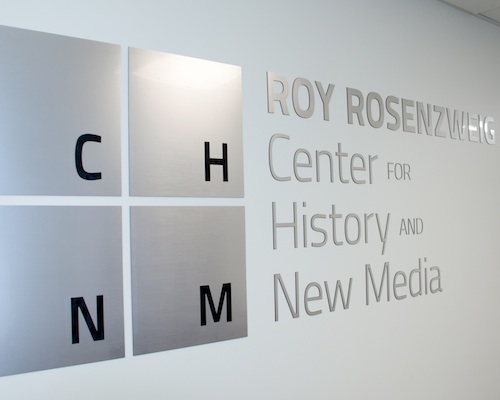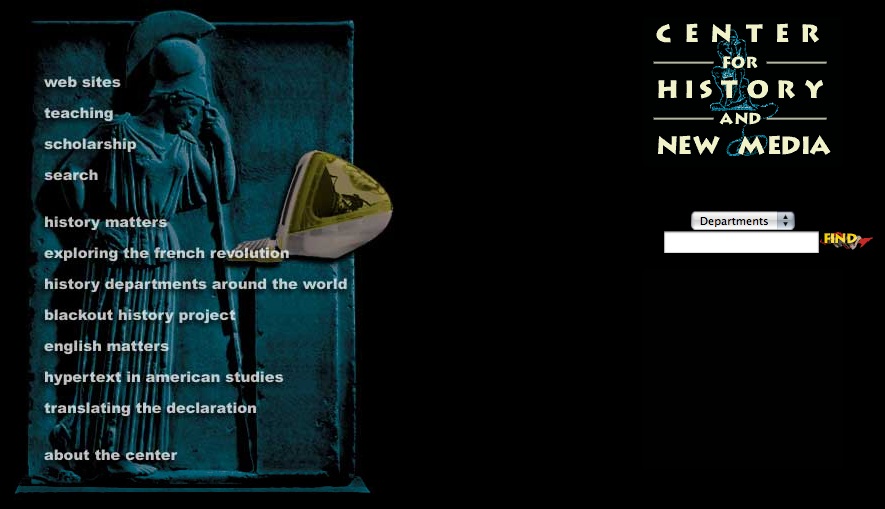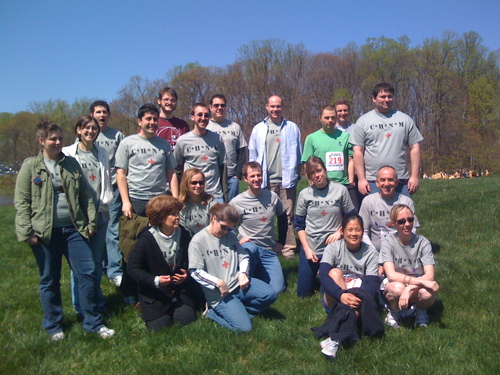We’re ramping up here at Zotero headquarters for the big release of the public beta (it should be out next week). But we’re already thinking ahead to great new features—including nifty ways to share and collaborate, as I mentioned in my last post on Zotero—and to building not only a large and active user community, but also a community to help disseminate, support, and further develop this free and open software. In short, we need your help! In this post I’ll let you know about the official George Mason University announcements for full-time positions at CHNM (sorry for the officialese and also for the repetitiveness; it’s necessary to post these as they are recorded with GMU Human Resources). In the next post, I’ll let you know about other opportunities to help out.
Senior Programmer: The Center for History & New Media (http://chnm.gmu.edu) at George Mason University is seeking a programmer to work primarily on Zotero (http://www.zotero.org), an open source bibliographic management and note-taking tool for the Firefox web browser. Applicants should have an advanced knowledge of JavaScript, XUL, XML, CSS, and other technologies critical for Firefox development, such as XPCOM. Applicants should also have a working knowledge of PHP, Java, and MySQL, and have solid command-line Linux skills. Ability to work in a team is very important. This is a grant-funded, two-year position at the Center for History and New Media (http://chnm.gmu.edu), which is known for innovative work in digital media. Located in Fairfax, Virginia, CHNM is 15 miles from Washington, DC, and accessible by public transportation. Please send a cover letter, resume, and three references to chnm@gmu.edu with subject line “senior programmer.” Applications without a cover letter and resume will not be considered. The cover letter should include salary requirements and a description of relevant programming projects and experience. We will begin considering applications on 10/15/2006 and continue until the position is filled.
Technology Outreach Coordinator: The Center for History & New Media at George Mason University is seeking a technology outreach coordinator for Zotero (http://www.zotero.org), an open source bibliographic management and note-taking tool for the Firefox web browser. The technology outreach coordinator will be responsible for building alliances with scholarly organizations and libraries, encouraging scholars to try Zotero, developing and maintaining user documentation, and building awareness of this next-generation research tool. We are looking for an energetic, well-organized individual with excellent written and oral communication skills. Applicants should have at least some graduate training in library science or one of the humanities or social science disciplines as well as familiarity with relevant technologies (e.g., XML, RDF, metadata standards, and Firefox extensions) and scholarly research practices. This is a grant-funded, two-year position at the Center for History and New Media (http://chnm.gmu.edu) at George Mason University, which is known for innovative work in digital media. Located in Fairfax, Virginia, CHNM is 15 miles from Washington, DC, and accessible by public transportation. Please send letter of application, CV, or resume, and three references to chnm@gmu.edu with the subject line “Technology Outreach Coordinator.” We will begin considering applications October 15, 2006, and continue until the position is filled.
Web Designer: The Center for History & New Media at George Mason University is seeking a web designer and developer. We require an energetic and well-organized individual to work on a variety of innovative, web-based history projects. This position is particularly appropriate for someone with a combined interest in technology and history. The successful applicant will be able to create mockups and wireframes for historical, cultural, and educational websites and bring those ideas to fruition using the latest and highest web development standards. Fluency with current web design technologies (including ability to hand code HTML, CSS, and Javascript) and familiarity with web accessibility and web usability standards are essential. Some familiarity with web-database technologies (MySQL, PHP), contemporary trends in web development (e.g., AJAX, DHTML and DOM Scripting, Rails) and multimedia and graphic design applications (Flash, including ActionScript, Final Cut Pro, Photoshop, Illustrator) is a plus, as is prior work in history or the humanities. This is a grant-funded two-year position at the Center for History and New Media (http://chnm.gmu.edu), which is known for innovative work in digital media. Located in Fairfax, Virginia, CHNM is 15 miles from Washington, DC, and accessible by public transportation.Please send a resume, three references, links to prior web/multimedia work, and a cover letter describing technology background and any interest in history to chnm@gmu.edu with subject line “Web Designer.” Salary: $32-40K plus excellent benefits. We will begin considering applications on 10/15/2006 and continue until the position is filled.
About CHNM: Since 1994, the Center for History and New Media at George Mason University has used digital media and computer technology to change the ways that people—scholars, students, and the general public—learn about and use the past. We do that by bringing together the most exciting and innovative digital media with the latest and best historical scholarship. We believe that serious scholarship and cutting edge multimedia can be combined to promote an inclusive and democratic understanding of the past as well as a broad historical literacy that fosters deep understanding of the most complex issues about the past and present. CHNM’s work has been internationally recognized for cutting-edge work in history and new media. Located in Fairfax, Virginia, CHNM is 15 miles from Washington, DC, and is accessible by public transportation.
Please also see the second post in this series for other exciting opportunities to help out and extend Zotero.








